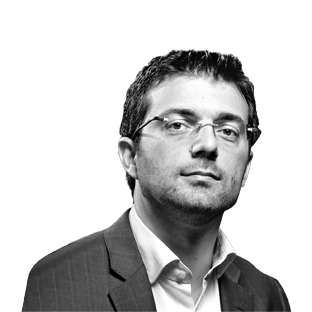Europe: Rendustrialize, Copy and improve

For decades, Europe has lived under the illusion of its own centrality. With a glorious past and a fundamental role in the history of science, industry and global politics, we got used to looking at the world with SOBRANCE. We considered the epicenter of progress, forgetting a basic rule of history: the future rewrite the past.
The world has changed – and accelerated. While Europe was lost in regulatory debates and bureaucracy, the United States innovated and China copied, improved and surpassed. Today, reality is clear: industrial and technological innovation is not in Europe. We lose leadership in strategic areas such as artificial intelligence, semiconductors, renewable energy or biotechnology, as well as leadership in traditional sectors such as the automotive industry, naval or pharmaceutical industry. We depend on third parties to critical technology, from industrial components to digital infrastructures. The « old continent » lived up to the name and stayed behind.
If we want to recover some relevance, we have to reverse the logic with which we look at the world. Don't we lead? So let's learn from those who lead. We need to create a model that allows us to innovate, copy and improve, adopting the best practices of others and refining them with the ability of European excellence. Europe has talent, knowledge and some capital. What is missing? A strategic vision that boosts reindustrialization and the creation of competitive technological ecosystems. Instead of choking companies and entrepreneurs with excessive regulation, we must create an environment where innovation thrives, encouraging strong industrial and technological clusters.
Asia realized this need for a long time. The Chinese model, initially based on the copy, has evolved into a system that not only replicates but perfects. Huawei, once a follower of Nokia and Ericsson, exceeded them. BYD did the same with Tesla in electric cars. Europe, which has always seen itself as a reference, now has to learn to follow – then try to lead again.
For this transformation to be possible, Europe needs to solve a structural problem: the lack of strong and cohesive leadership. The European Union remains a sum of national interests and small political guerrillas that limit its ability to action in the global scenario. Perhaps it is time to rethink the European model. A federal system, or something similar, could give the scale and agility necessary to face the challenges of the New World Order. Until we do it, we will remain attached to our fragmentation, while the United States and China shape the future.
Europe has already wasted enough time in endless debates about rules and norms. The 21st century challenge is not regulation – it is the ability to make, test and climb. The world does not expect, and the story does not forgive those who are left behind. Rendustrializing, copying and improving is not a sign of weakness. It is a strategic recognition of reality. And it is, above all, the only way to play a central role in the future. If we are unable to change the paradigm and adopt a more pragmatic view, we will continue to passively attend the rise of others, while we debate with internal seizures and divisions that only weaken us. The time to act is now. The future does not wait for those who hesitate.








